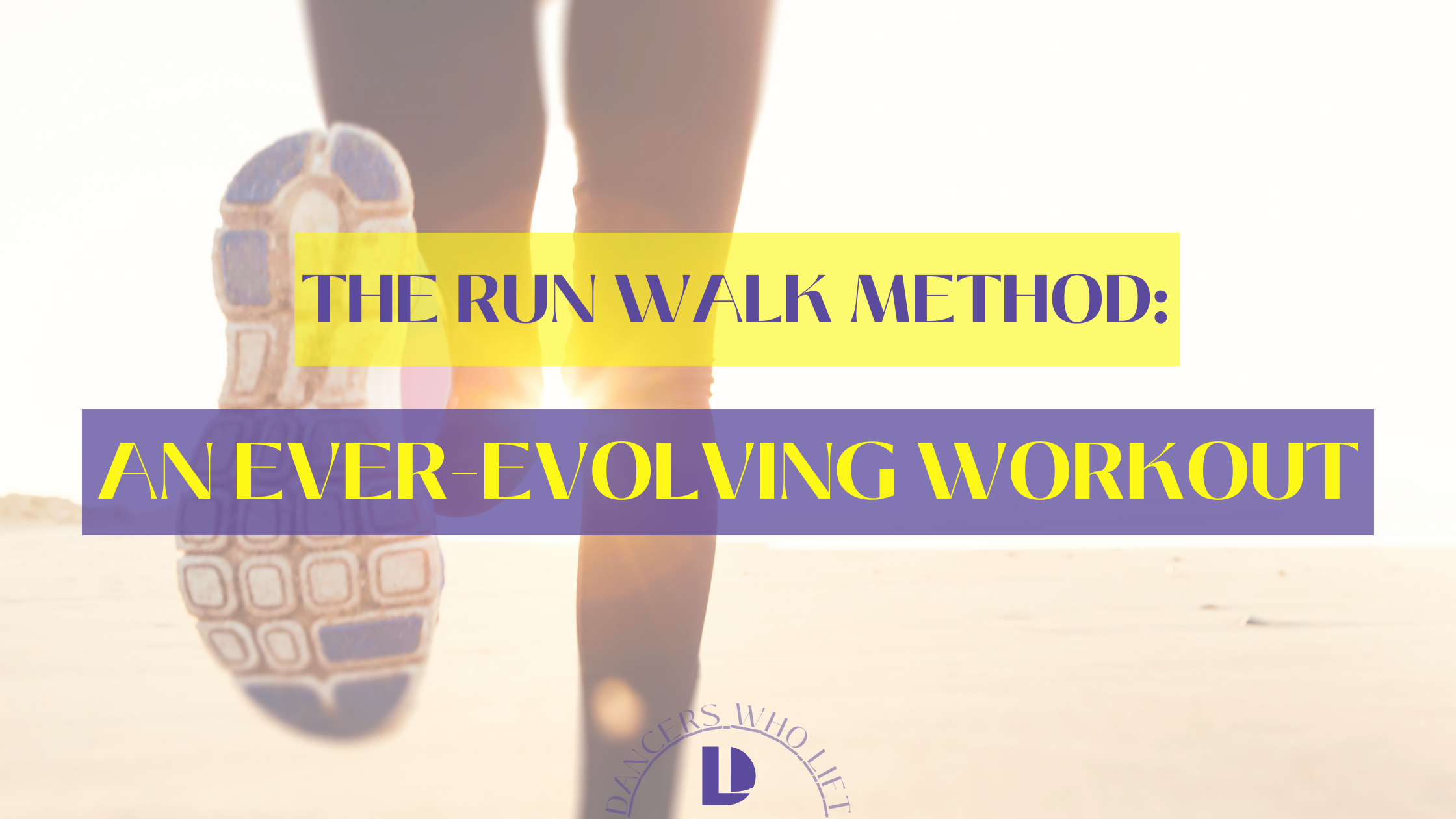A lot of dancers believe the age old myth that running isn’t good for them. However, science shows that running actually has a lot of benefits for dancers. This leaves a lot of dancers beginning their running journey late in life. Enter, the run walk method.
The run walk method was started by former olympian, Jeff Galloway in the early 70s. He was teaching a class to beginner runners and realized that he needed to create a method that would allow these athletes to increase their cardio stamina, protect them from injury, and aide them in quicker recovery between runs. So, he introduced the run walk method.
What is the Run Walk Method?
The run walk method is a form of interval training in which runners take timed intervals of walking breaks throughout their run.
Now, I know dancers.
I know that we like to say “Eh, I don’t need a break” and keep pushing to prove we are as athletically strong as any other athlete. However, science shows that utilizing the run walk method does not reduce the load on the cardiovascular system, but it does reduce muscle discomfort and fatigue. This allows non-elite runners to finish their runs with similar times with less discomfort.
That’s right. Using the run walk method might not even impact your run time by much and it’s easier on your joints and muscles, meaning a faster recovery time.
So, How Do I Do the Run Walk Method?
Where you start with the run walk method will largely depend on the individual.
To determine your intervals you have three choices: time, heart-rate, distance.
For people new to running, we recommend using time because of it’s simplicity.
For example, run for one minute, walk for four and continue until you complete your run.
If you prefer the heart-rate method you’d run until your heart rate reaches 80% capacity (or until you barely start huffing and puffing) then walk until your hear rate reaches 60% capacity (breathing heavy but easily).
It’s important in either of these methods that you don’t push your pace too fast too soon. It’s tempting, but ultimately will negate the benefits of a quick recovery.
Patience is the key here.
Today’s Workout:
For today’s workout we are going to use time to determine our intervals as that’s the easiest benchmark to track and it is adjustable.
First, choose either a distance you’d like to run today or and interval of time for which you’d like to run.
Have you made your choice?
Next, use an interval timer on your phone to set these intervals:
Run one minute, walk for four.
If this interval is too easy, feel free to either shorten the walk time or lengthen the run time. You can even do both!
(Though we recommend starting with small adjustments!)
Once you’ve completed your run, check in with yourself. How do you feel? Was running that distance easier than usual?
If you ran for time, did you run farther than usual?
Tomorrow, be mindful of how your body feels. Chances are you’ll notice less muscle fatigue than you’re used to after a day of running!
The Best Part
The best thing about the run walk method is that each time you run you can progress by lengthening the amount of time you run before you take your walking interval. Jeffrey Galloway says this is his clients’ favorite aspect of utilizing this method of training – seeing their progress week to week as their muscles and joints get stronger.
So what do you think? Will you try this method on your next run? If you do, let us know how you felt! Were you able to run farther than usual! We’d love to celebrate a break through in your fitness goals!
Want more workouts? Check out the blog every Wednesday!
Until then, here are a few resources we think you’ll enjoy: The Stair Down: An Adjustable Stair Workout, Should Dancers Run? The Surprising Health Benefits of Running, Explained, Eight Ways to Promote Faster Recovery

